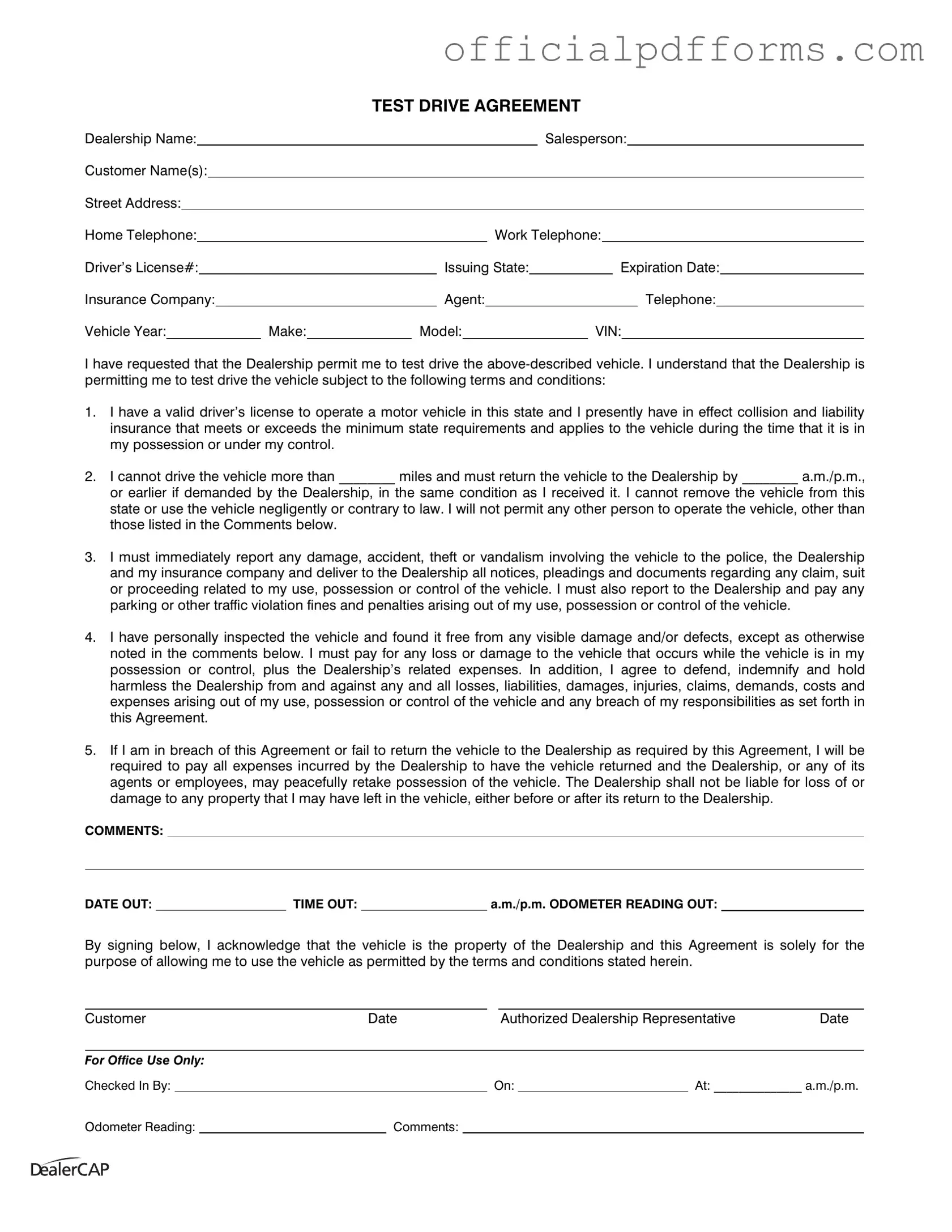The Test Drive form serves as an agreement between the customer and the dealership, allowing the customer to test drive a vehicle. It outlines the terms and conditions that must be followed during the test drive, ensuring both parties understand their responsibilities.
The form requires various details, including:
-
Dealership name
-
Salesperson's name
-
Customer's name(s)
-
Contact information (home and work telephone)
-
Driver’s license information
-
Insurance details
-
Vehicle information (year, make, model, VIN)
What are the key responsibilities of the customer during the test drive?
Customers have several important responsibilities, including:
-
Maintaining a valid driver’s license and insurance that meets state requirements.
-
Limiting the mileage driven and returning the vehicle by the specified time.
-
Reporting any incidents, such as damage or accidents, to the dealership and relevant authorities.
-
Inspecting the vehicle for visible damage before taking possession.
Can someone else drive the vehicle during the test drive?
No, the agreement specifies that only the customer and any individuals listed in the comments section are permitted to operate the vehicle. This restriction is in place to protect both the customer and the dealership.
What happens if the vehicle is damaged during the test drive?
If the vehicle sustains any damage while in the customer's possession, the customer is responsible for covering the costs of repair. Additionally, the customer must report the damage to the dealership immediately.
What should I do if I exceed the mileage limit?
Exceeding the mileage limit outlined in the agreement may be considered a breach of contract. The dealership may charge the customer for any additional expenses incurred as a result. It is advisable to adhere to the mileage limit to avoid complications.
What are the consequences of not returning the vehicle on time?
Failure to return the vehicle by the specified time may result in additional charges. The dealership reserves the right to take possession of the vehicle if it is not returned as required. Customers should communicate with the dealership if they anticipate being late.
Is the dealership liable for personal items left in the vehicle?
The dealership is not liable for any loss or damage to personal property left in the vehicle. Customers should ensure they remove all personal items before returning the vehicle.
The form must be signed by both the customer and an authorized dealership representative. This signature acknowledges that both parties understand and agree to the terms outlined in the agreement. The dealership will keep a copy for their records.
